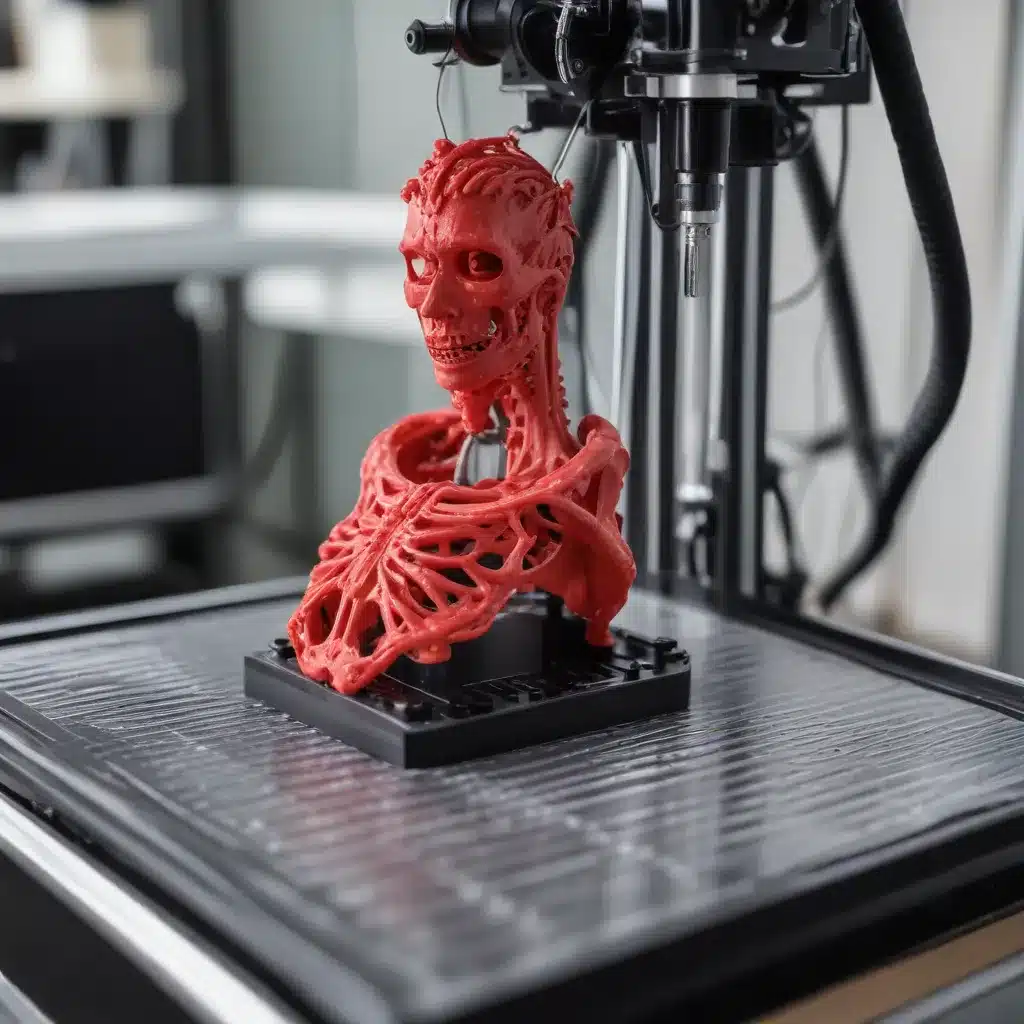
The Rise of Industrial Resin 3D Printing: Balancing Innovation and Safety
In the ever-evolving manufacturing landscape, industrial resin 3D printers have emerged as a game-changing technology, offering unparalleled precision, versatility, and the ability to bring complex designs to life. However, as with any cutting-edge innovation, these printers come with potential health risks that must be addressed. As a seasoned industry expert in forklifts, warehousing, and logistics, I’m here to provide practical tips and in-depth insights to help you navigate the challenges of using industrial resin 3D printers safely.
Understanding the Risks: Toxic Fumes and Chemical Exposure
Industrial resin 3D printers utilize a variety of synthetic polymers and chemicals that can pose significant health risks if not handled properly. These printers often emit volatile organic compounds (VOCs) and nanoparticles into the air during printing, which can have serious consequences for both operators and the surrounding environment.
One of the primary concerns is the release of harmful fumes, such as those containing styrene, a chemical classified as a carcinogen. Prolonged exposure to these fumes can lead to severe health issues, including skin irritation, allergic reactions, and even respiratory problems like asthma, chronic obstructive pulmonary disease (COPD), and lung cancer.
Additionally, the resins used in these printers often contain chemicals like isooctyl acrylate and HDODA, which can cause contact dermatitis – a condition that can escalate to more severe allergic reactions with repeated exposure. Handling these materials without proper personal protective equipment (PPE) can lead to direct skin contact, further exacerbating the risks.
Mitigating the Risks: Ventilation and Personal Protective Equipment
Proper ventilation is essential to mitigate the risks associated with industrial resin 3D printers. In an industrial setting, advanced ventilation systems, including exhaust systems and air purifiers, should be implemented to ensure the air quality remains safe. A minimum capture velocity of 100 feet per minute for a local exhaust ventilation system can effectively remove harmful fumes from the workspace.
Additionally, high-efficiency particulate air (HEPA) filters can capture particles as small as 0.3 microns, significantly reducing the risk of inhalation. Inadequate ventilation can lead to a buildup of toxic fumes, increasing the risk of respiratory issues and other health problems.
Alongside effective ventilation, the use of personal protective equipment (PPE) is crucial in minimizing exposure to hazardous chemicals and fumes. The essential PPE for resin 3D printing includes gloves, masks, and safety goggles. By donning the appropriate PPE and ensuring proper ventilation, operators can significantly reduce their risk of exposure and maintain a safe working environment.
Handling and Storing Resin: Best Practices for Minimizing Risks
Proper handling and storage of resin are critical for ensuring safety and maintaining the quality of prints produced by industrial resin 3D printers. Here are some essential guidelines to follow:
Resin Storage:
– Store resin in a cool, dry place away from direct sunlight, which can prematurely cure the resin.
– Use opaque, airtight containers to prevent exposure to light and air, which can degrade the resin over time.
– Clearly label each container with the type of resin and its expiration date to avoid confusion and ensure you use the resin within its shelf life.
Handling Procedures:
– Always wear appropriate personal protective equipment (PPE), such as nitrile gloves, safety goggles, and a lab coat, when handling resin.
– Pour resin carefully to avoid spills, and use a funnel to transfer resin from one container to another.
– If a spill occurs, clean it up immediately using absorbent materials and dispose of the waste according to local regulations.
Post-Processing: Ensuring a Safe and Responsible Workflow
Post-processing is a critical phase in resin 3D printing that involves curing, cleaning, and disposing of waste. Proper safety measures during this phase are essential to protect both the operator and the environment.
Curing and Cleaning:
– Ensure that cured parts are thoroughly cleaned using appropriate solvents, such as isopropyl alcohol, to remove any uncured resin.
– Dispose of used solvents and cleaning materials in accordance with local hazardous waste regulations.
Waste Disposal:
– Uncured resin and related waste must be handled as hazardous materials and disposed of through authorized channels.
– Follow local regulations and guidelines to ensure the safe and responsible disposal of resin waste, preventing environmental contamination.
Striking a Balance: Embracing the Technology while Prioritizing Safety
While industrial resin 3D printers have revolutionized manufacturing processes, ensuring the safety of operators and the environment remains paramount. By adhering to best practices for handling and storing resins, implementing proper ventilation systems, and following post-processing safety protocols, businesses can harness this technology’s full potential while mitigating potential health risks.
At Forklift Reviews, we understand the importance of staying up-to-date with the latest industry trends and innovations. As a seasoned expert in the field, I encourage you to prioritize safety as you explore the exciting world of industrial resin 3D printing. By taking the necessary precautions and implementing robust safety measures, you can breathe easy and unlock the true power of this transformative technology.
Conclusion: Embracing Innovation Responsibly
The rise of industrial resin 3D printing has undoubtedly revolutionized the manufacturing landscape, but with great power comes great responsibility. By understanding the risks, implementing effective safety protocols, and prioritizing the well-being of operators and the environment, businesses can unlock the full potential of this game-changing technology.
As you navigate the world of industrial resin 3D printing, remember to stay vigilant, prioritize safety, and continuously seek out the latest industry insights and best practices. With the right approach, you can harness the power of this innovative technology while ensuring a safe and responsible workflow that benefits your business, your employees, and the broader community.

